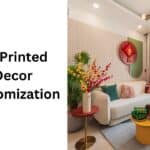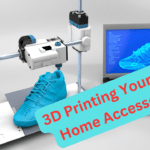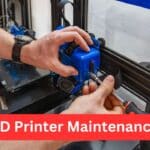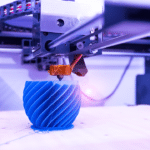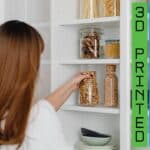
Avoid common 3D printing pitfalls—select the right printer, use suitable materials, understand design limits, and maintain your printer—to craft stunning custom home decor. With patience and practice, 3D printing becomes a rewarding way to enhance your home.
3D printing has taken the home decor world by storm, offering the ability to create unique, personalized pieces that suit any style or space. For beginners, however, diving into 3D printing can come with its challenges. Mistakes are common, but with the right knowledge, they can be avoided. In this guide, we’ll walk you through the most common 3D home decor mistakes and provide tips on how to avoid them, helping you make the most of your 3D printer and create beautiful, high-quality decor.
3D Home Decor Mistakes to Avoid
1. Choosing the Wrong 3D Printer for Home Decor Projects
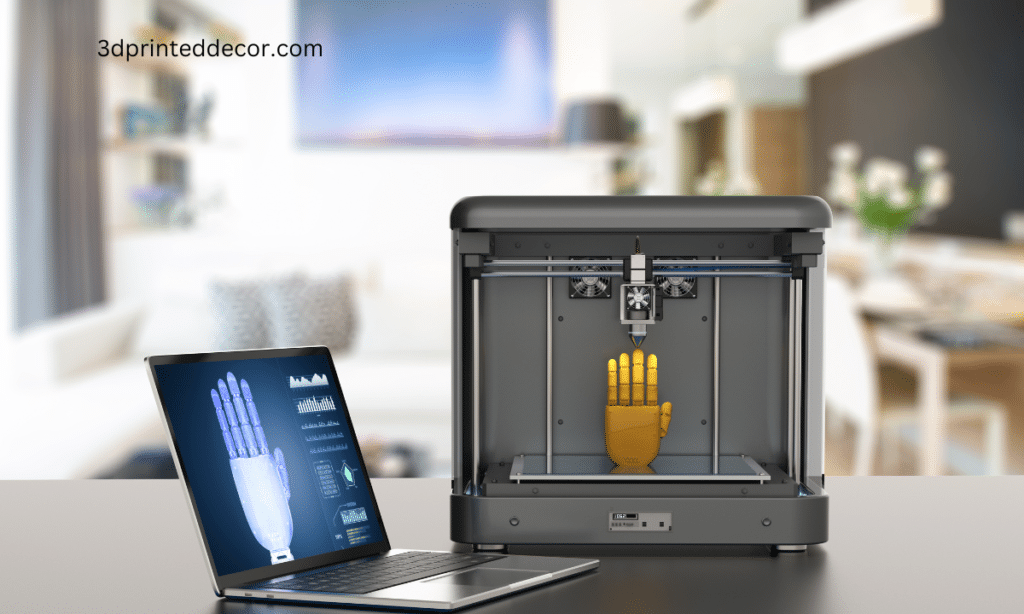
Affiliate Disclosure
We participate in Amazon affiliate programs, earning fees from qualifying purchases via links at no extra cost to you. It’s how we keep this blog rolling and my 3D printers buzzing with fresh filament for reviews like this one!
One of the first and most crucial decisions when starting your 3D printing journey is choosing the right printer. Many beginners make the mistake of opting for the cheapest option available, assuming all 3D printers are the same. However, this can lead to frustration and poor results, especially when working on home decor items.
Mistake:Choosing a 3D printer that doesn’t meet your specific project requirements.
Solution: When selecting a 3D printer, consider factors such as build volume, resolution, and material compatibility. For larger home decor pieces, a printer with a bigger build area is essential. Look for reliable models with good reviews from users who have experience in 3D printing decor. Don’t base your decision solely on price; invest in a machine that will give you the quality and size options you need.
2. Overlooking the Importance of 3D Printing Materials

The type of filament you use can make or break your 3D printed decor. Not all materials are created equal, and different projects may require different types of filaments based on durability, appearance, and environmental factors.
Mistake: Using inappropriate materials that degrade or fail in certain environments.
Solution: Get familiar with the properties of common 3D printing filaments:
- PLA: Great for indoor use, non-toxic, and easy to print with, but it can warp or degrade in high heat or moisture.
- ABS: Strong and heat-resistant, but it requires a heated bed and produces fumes that can be harmful if not properly ventilated.
- PETG: A durable, flexible material that works well for both indoor and outdoor decor, resistant to water and UV exposure.
Choose the material that best suits your decor’s placement and function. For example, outdoor decor pieces should use PETG or similar materials for better longevity.
3. Ignoring Design Software Limitations
Even with the best 3D printer, your project’s success depends on the quality of the design. Many beginners jump into complex 3D modeling software, only to find themselves stuck or frustrated with the steep learning curve.
Mistake: Using advanced software without understanding its limitations or how to fix design flaws.
Solution: Start with user-friendly design tools like Tinkercad or Fusion 360, which offer intuitive interfaces and plenty of tutorials for beginners. These programs allow you to design your own decor items or modify existing ones, and they are compatible with most 3D printers. As you grow more comfortable, you can experiment with more complex software.
4. Skipping Post-Processing for Finished 3D Decor
Straight off the print bed, 3D prints often don’t look polished. They may have visible layer lines, support structures, or other imperfections that need to be addressed to achieve a professional look.
Mistake: Displaying or using decor items without any post-processing, resulting in a rough, unfinished appearance.
Solution: Post-processing is a crucial step to improving the quality of your prints. Sanding your decor items can smooth out layer lines and rough edges, while priming and painting can give the piece a vibrant, polished finish. Acrylic paints work well for most 3D printing materials, but be sure to test your materials first. For multi-part prints, proper assembly techniques are essential for a clean final product.
5. Not Considering Scale and Proportion in 3D Printed Decor
Size matters in home decor, and it’s easy to misjudge how large or small a 3D printed item will be in real life compared to its digital model. This mistake can result in pieces that feel out of place in your home.
Mistake: Printing decor items that are either too large or too small for the intended space.
Solution: Always measure the space where you plan to display your decor before printing. Many 3D modeling programs allow you to adjust the scale of your design, so make sure to size it appropriately. Using augmented reality (AR) tools to visualize the item in your home before printing can help ensure the perfect fit.
6. Neglecting Print Bed Adhesion and Warping Issues
Print bed adhesion is one of the most common challenges for beginners. Without proper adhesion, prints can warp or fail altogether, ruining hours of work.
Mistake: Failing to prepare the print bed properly, leading to warping or incomplete prints.
Solution: Properly level your print bed and ensure it’s clean before starting any print. Using adhesives like a glue stick or blue painter’s tape can help improve bed adhesion. For more advanced printers, a heated bed can also help prevent warping, especially when printing with materials like ABS.
7. Misunderstanding Print Time and Underestimating Complexity
3D printing is not a quick process, especially for detailed or large decor items. Many beginners underestimate how long a print will take and how much post-processing will be involved.
Mistake: Assuming prints will be quick and easy, only to be frustrated by long print times and complicated assembly.
Solution: Use your 3D printing software to estimate the print time for each project. Remember that larger or more complex prints can take several hours or even days. Plan ahead and be patient, especially with intricate designs. If you’re working on a tight schedule, consider breaking the design into smaller parts that can be printed separately and then assembled.
8. Not Testing Prototypes Before Printing Final Designs
Jumping straight to a full-size print without testing a prototype is a recipe for wasted time and materials. A small design flaw can ruin a large print, and reprinting can be costly.
Mistake: Skipping the prototyping phase and going straight to the final print.
Solution: Always print a prototype at a smaller scale to check for any issues with the design. This allows you to test how well the pieces fit together, if the structure is stable, and whether any changes are needed. After testing and making adjustments, you can confidently move forward with the full-scale print.
9. Overlooking Environmental Factors and Placement
Environmental factors such as temperature, sunlight, and humidity can significantly affect both the 3D printing process and the finished product’s longevity.
Mistake: Placing decor items in areas where they will be exposed to elements they’re not designed to withstand.
Solution: Consider where your decor will be placed before selecting materials and starting the print. For instance, 3D prints exposed to high humidity or direct sunlight should be made from materials like PETG, which can withstand these conditions. If printing in a hot or humid environment, adjust your printer’s settings to avoid warping or other printing issues.
10. Failing to Properly Maintain the 3D Printer
A well-maintained 3D printer is essential for consistent quality and fewer failed prints. Many beginners neglect printer maintenance, which leads to issues such as clogged nozzles or uneven print surfaces.
Mistake: Forgetting to clean and maintain the 3D printer, resulting in poor print quality.
Solution: Create a maintenance routine for your 3D printer. Clean the nozzle regularly to prevent clogs, and keep the bed leveled. Lubricate any moving parts and ensure your printer’s firmware is up to date. Regular maintenance will prolong the life of your printer and ensure consistently high-quality prints.
Conclusion
3D printing offers endless possibilities for creating custom home decor, but beginners can fall into several common traps that lead to frustration or poor results. By avoiding these 3D home decor mistakes—choosing the right printer, using appropriate materials, understanding design limitations, and maintaining your printer—you can create stunning, high-quality pieces that truly enhance your home. With patience, practice, and attention to detail, 3D printed decor can become a creative and rewarding addition to your home design projects.
Frequently Asked Questions (FAQs)
What’s the best material for 3D printing home decor?
The best material depends on the project and environment. PLA works well for indoor use, while PETG is ideal for outdoor pieces due to its durability and resistance to moisture and UV exposure.
How do I avoid warping in my 3D prints?
To avoid warping, ensure your print bed is leveled and clean. Use a glue stick, blue painter’s tape, or a heated bed for better adhesion, especially with materials like ABS.
Can I paint my 3D printed decor?
Yes! Post-processing steps like sanding, priming, and painting with acrylic paints can give your 3D prints a polished, professional look. Make sure to use paints compatible with your filament.
What software should I use for designing 3D decor?
Beginners can start with Tinkercad or Fusion 360. These programs are user-friendly and offer plenty of tutorials to help you design or modify home decor items.
How can I ensure my 3D printed decor is the right size?
Always measure the space where you plan to display the item and adjust the scale in your design software. You can also use augmented reality tools to preview the size in your home before printing.

